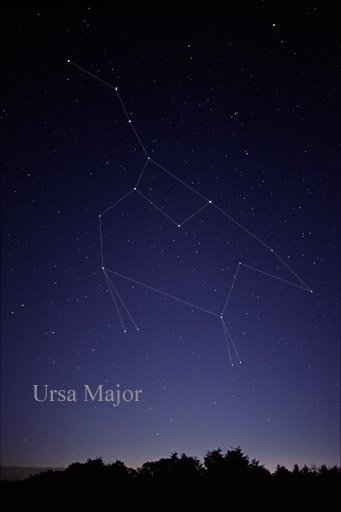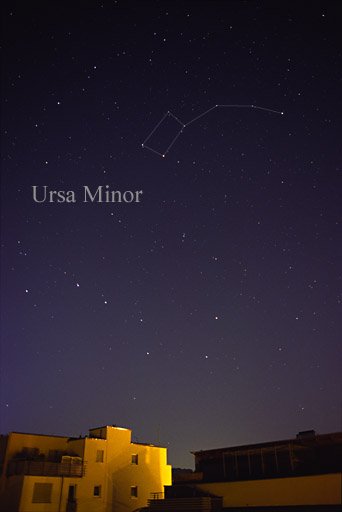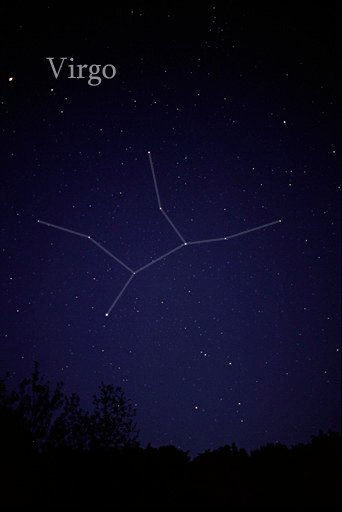
Image source [1]: The Big Dipper or Plough.
Hello friends, here ends our journey through the constellations, thanks to all those who took their time to know some beautiful constellations that exist in our universe, today we will know the three last constellations which are Ursa Major, Ursa Minor and Virgo.
Ursa Major is a constellation in the northern sky, whose associated mythology is likely dates back into prehistory. Its Latin name means "greater (or larger) she-bear", standing as a reference to and in direct contrast with nearby Ursa Minor, the lesser bear. In antiquity, it was one of the original 48 constellations listed by Ptolemy (2nd century AD), and is now the third largest constellation of the 88 modern constellations. The "Big Dipper" is an asterism within Ursa Major composed of seven bright stars (six of them of second magnitude or higher) that together comprise one of the best-known patterns in the sky.

Image source [2]: The constellation Ursa Major as it can be seen by the unaided eye.

Image source [3]: Ursa Major and Ursa Minor in relation to Polaris.
Ursa Minor is a constellation in the Northern Sky. Like the Great Bear, the tail of the Little Bear may also be seen as the handle of a ladle, hence the North American name, Little Dipper: seven stars with four in its bowl like its partner the Big Dipper. It was one of the 48 constellations listed by the 2nd-century astronomer Ptolemy, and remains one of the 88 modern constellations. Within the constellation's borders, there are 39 stars brighter than or equal to apparent magnitude 6.5.

Image source [4]: The constellation Ursa Minor as it can be seen by the naked eye (with connections and label added).
Virgo is one of the constellations of the zodiac. Its name is Latin for virgin. Lying between Leo to the west and Libra to the east, it is the second-largest constellation in the sky (after Hydra). It can be easily found through its brightest star, Spica. The bright star Spica makes it easy to locate Virgo, as it can be found by following the curve of the Big Dipper / Plow to Arcturus in Boötes and continuing from there in the same curve ("follow the arc to Arcturus and speed on to Spica ").

Image source [5]: The constellation Virgo.
Free Stuff - VFX Footage / Motion Graphics

You have done a good job on the said topic
Downvoting a post can decrease pending rewards and make it less visible. Common reasons:
Submit
Thanks :)
Downvoting a post can decrease pending rewards and make it less visible. Common reasons:
Submit
Very nice, well written.
Up in northern Michigan we can see all the stars as it is far away from the city. No lights.
Thanks for sharing.
Downvoting a post can decrease pending rewards and make it less visible. Common reasons:
Submit
Nice
Downvoting a post can decrease pending rewards and make it less visible. Common reasons:
Submit